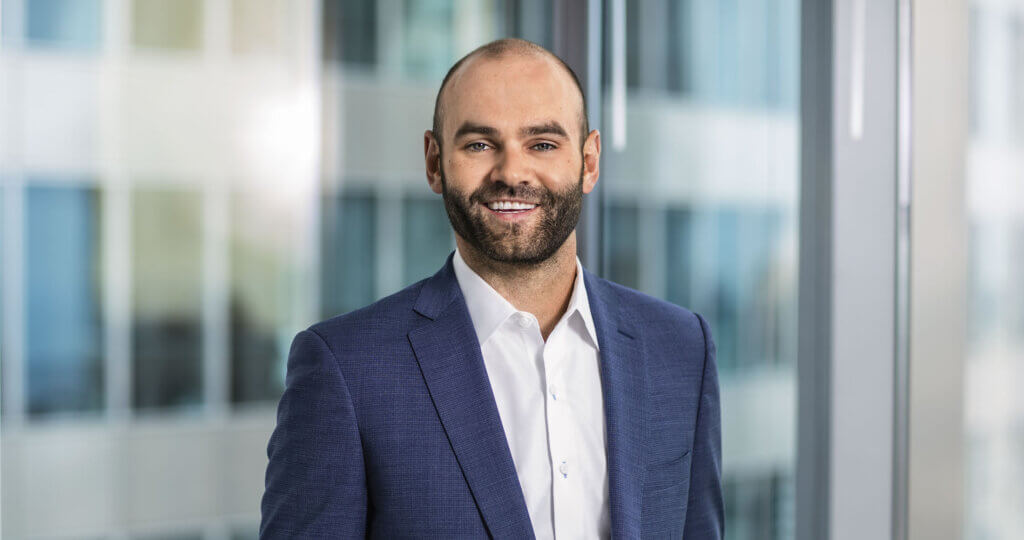Oakmark Global Fund – Investor Class
Average Annual Total Returns 09/30/22
Since Inception 08/04/99 8.35%
10-year 6.61%
5-year 0.19%
1-year -25.74%
3-month -11.59%
Expense Ratio: 1.13%
Expense ratios are based on estimated amounts for the current fiscal year; actual expenses may vary.
Past performance is no guarantee of future results. The performance data quoted represents past performance. Current performance may be lower or higher than the performance data quoted. The investment return and principal value vary so that an investor’s shares when redeemed may be worth more or less than the original cost. To obtain the most recent month-end performance data, view it here.
Why Global?
For what seems like forever, we have been writing about U.S. stocks’ superior performance. The numbers for the past decade are striking: the S&P 500 has outperformed the MSCI All Country World ex U.S. Index by 8.7% per year over this 10-year period. Early this year, it looked like international markets might begin to reduce this disparity, but then the Ukraine war began, Europe experienced energy challenges, China continued Covid-19-related lockdowns and the change in U.S. Federal Reserve policy caused most foreign currencies to deteriorate in dollar terms. So, one can easily ask, “Why should a U.S. investor own any international equities at all?”
In fact, we think that the results of the past decade make the case for global investing stronger than ever. First, although international equities have lagged behind U.S. equities for quite some time, international stocks have dominated during other periods. For the decade ending in 1986, international stocks substantially outperformed the U.S. despite fighting some of the same currency headwinds that we see today. Also, in the first seven years of the new millennium, international issues enjoyed significant outperformance. Second, international markets offer investing opportunities that are not readily available in the U.S., from commodities to luxury products. Third, international countries have produced great companies and management teams. Fourth, the valuations for international equities are far cheaper than for U.S. companies, even after a period of lackluster earnings growth. Many Americans have noted the appreciated value of the U.S. dollar and traveled abroad to take advantage of this development. The same currency advantage is available to U.S. investors today.
We believe that the Global Fund’s diversification is a key attribute. Although our portfolio is diversified, we limit the number of holdings in the Fund so that it represents what we believe to be a “best of” portfolio. For several years, we have kept the asset allocation of the Global Fund evenly divided between international and U.S. holdings. In hindsight, this proved to be ill-advised given the return differences. But with recent price and currency movements, international investments are both inexpensive in their home markets and compelling to U.S. investors because they offer the possibility of currency appreciation. Although it is impossible to predict exactly when the tides will shift, we believe that our international holdings can provide shareholders not only with diversification, but also attractive absolute returns.
One year ago, we wrote the following: “Regardless of the investing landscape, it is our job in managing the Global Fund to invest in the most attractive opportunities wherever we may find them. The local market where an issue is domiciled can affect the issue’s return potential in the short term, but in the long-term price and value usually find a way to come together. {Recent} stock market returns have favored the U.S., but that fact tells us little about the future. At quarter end, the Fund was 49% allocated to U.S. equities, and that allocation will always depend not on our attempt to forecast which market will excel but rather on our ability to identify dominant opportunities with which to populate the portfolio.” And having an entire world to search for these opportunities is a tremendous advantage.
Quarter Review
The September quarter was a difficult period for the Oakmark Global Fund. The Fund dropped 11.6%, which compares to a loss of 6.2% for the MSCI World Index and 6.8% for the Lipper Global Fund Index. For the calendar nine months, the Fund lost 28.6%, compared to 25.4% for the MSCI World Index and 27.8% for the Lipper Global Fund Index. Finally, for the Fund’s fiscal year ended September 30, the Fund fell 25.7%, and the MSCI World Index fell 19.6%, while the Lipper Global Fund Index lost 24.6%. From inception, the Fund’s compound annualized return rate is 8.4%.
For the quarter, India was the only country to produce a positive contribution for the Fund, while the U.S., Germany and U.K. detracted from returns. Despite the poor total return in the period, there were stocks that contributed positively: Pinterest (U.S.), Fiserv (U.S.), Humana (U.S.—sold during the quarter), Axis Bank (India) and Glencore (Switzerland). The five largest detractors were Alibaba Group (China), Liberty Broadband (U.S.), Prosus (Netherlands), Alphabet (U.S.) and Bayer (Germany).
For the first three quarters of 2022, South Africa, Australia and Japan were the countries that contributed most to return, while the U.S., U.K. and Germany detracted most. The issuers that contributed most were Naspers (South Africa), Glencore, Bayer, NOV (U.S.) and Humana. The largest detractors were Alphabet, General Motors, TE Connectivity (Switzerland), Liberty Broadband and Credit Suisse (Switzerland).
September 30 ends the Fund’s fiscal year. For that 12-month period, South Africa, Australia and Japan contributed most to returns while the U.S., U.K. and Germany led the detractors. Glencore led the positive contributors followed by Humana, Naspers, NOV and Incitec Pivot (Australia). General Motors, Alphabet, Liberty Broadband, Credit Suisse and Prosus detracted most from returns.
Transaction Activity
We initiated one new holding in the quarter and eliminated four positions. We purchased shares of Warner Bros. Discovery, which was created through the merger of Discovery, Inc. and WarnerMedia earlier this year. The combination created one of the largest media companies in the U.S. with a massive back catalog of valuable content from the Warner Bros. Studio, HBO, and the Discovery and Turner television networks. The company is on pace to earn around $1.50 per share this year despite directing much of its content catalog today toward its streaming services HBO Max and discovery+, which are collectively generating significant losses. We believe that this content catalog will be profitably monetized over time—whether through the company’s own streaming services or through licensing content to other platforms. Either path will significantly bolster earnings from current levels. Meanwhile, the combination will also allow for significant cost reductions across the cable network and streaming businesses, thereby further boosting profits. Warner Bros. shares are currently trading at just a mid-single digit multiple of our estimate of underlying power after accounting for these factors. We believe that is far too cheap for this quality content business.
Our sales were Continental, Humana, Liberty Global and Richemont. The sales of Continental and Liberty Global produced losses and were part of our effort to manage the Fund in a tax-efficient manner. We used the sales proceeds to reinvest in more attractive portfolio holdings, in our view. We eliminated the Humana and Richemont holdings as they approached their respective sell targets. We still believe both to be attractive businesses that benefit from favorable demographics and we would happily return to them should their valuations become more compelling. The U.S. allocation remained at approximately 49% of the portfolio with 47% internationally invested and the remainder held in reserves.
In closing, we note that the Fund did not have currency hedges in place at quarter’s end. We defensively hedge a portion of the Fund’s exposure to currencies when we believe they are overvalued versus the U.S. dollar, but we do not find any such overvaluation currently. As always, we thank you for being our partners in the Oakmark Global Fund. We invite you to send us your comments or questions.
The securities mentioned above comprise the following percentages of the Oakmark Global Fund’s total net assets as of 09/30/2022: Alibaba Group 1.0%, Alphabet Cl A 6.3%, Axis Bank 0.8%, Bayer 2.8%, Continental 0%, Cie Financiere Richemont 0%, Credit Suisse Group 2.5%, Fiserv 2.8%, General Motors 3.8%, Glencore 2.1%, Humana 0%, Incitec Pivot 0%, Liberty Broadband Cl C 1.7%, Liberty Global 0%, Naspers 0%, NOV 2.0%, Pinterest Cl A 1.5%, Prosus 5.8%, TE Connectivity 5.2%, and Warner Bros Discovery 1.0%. Portfolio holdings are subject to change without notice and are not intended as recommendations of individual stocks.
Access the full list of holdings for the Oakmark Global Fund here.
The S&P 500 Total Return Index is a float-adjusted, capitalization-weighted index of 500 U.S. large-capitalization stocks representing all major industries. It is a widely recognized index of broad, U.S. equity market performance. Returns reflect the reinvestment of dividends. This index is unmanaged and investors cannot invest directly in this index.
The MSCI All Country World ex USA Index (Net) is a free float-adjusted, market capitalization-weighted index that is designed to measure the equity market performance of developed and emerging markets, excluding the United States. The index includes large- and mid-sized stocks and covers approximately 85% of the global equity opportunity set outside the U.S. This benchmark calculates reinvested dividends net of withholding taxes. This index is unmanaged and investors cannot invest directly in this index.
The Lipper Global Fund Index measures the equal-weighted performance of the 30 largest global equity funds as defined by Lipper. This index is unmanaged and investors cannot invest directly in this index.
The Fund’s portfolio tends to be invested in a relatively small number of stocks. As a result, the appreciation or depreciation of any one security held by the Fund will have a greater impact on the Fund’s net asset value than it would if the Fund invested in a larger number of securities. Although that strategy has the potential to generate attractive returns over time, it also increases the Fund’s volatility.
Investing in foreign securities presents risks that in some ways may be greater than in U.S. investments. Those risks include: currency fluctuation; different regulation, accounting standards, trading practices and levels of available information; generally higher transaction costs; and political risks.
The compound return is the rate of return, usually expressed as a percentage that represents the cumulative effect that a series of gains or losses has on an original amount of capital over a period of time. Compound returns are usually expressed in annual terms, meaning that the percentage number that is reported represents the annualized rate at which capital has compounded over time.
The percentages of hedge exposure of each foreign currency are calculated by dividing the market value of all same-currency forward contracts by the market value of the underlying equity exposure to that currency.
The information, data, analyses, and opinions presented herein (including current investment themes, the portfolio managers’ research and investment process, and portfolio characteristics) are for informational purposes only and represent the investments and views of the portfolio managers and Harris Associates L.P. as of the date written and are subject to change and may change based on market and other conditions and without notice. This content is not a recommendation of or an offer to buy or sell a security and is not warranted to be correct, complete or accurate.
Certain comments herein are based on current expectations and are considered “forward-looking statements”. These forward looking statements reflect assumptions and analyses made by the portfolio managers and Harris Associates L.P. based on their experience and perception of historical trends, current conditions, expected future developments, and other factors they believe are relevant. Actual future results are subject to a number of investment and other risks and may prove to be different from expectations. Readers are cautioned not to place undue reliance on the forward-looking statements.
All information provided is as of 09/30/2022 unless otherwise specified.









